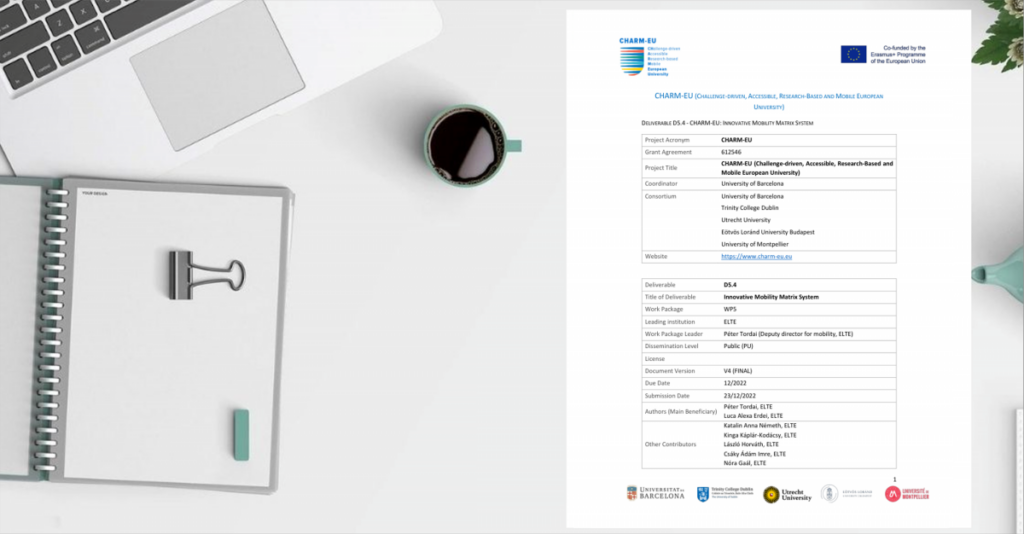December 2022
CHARM-EU Educational Project – D5.4
International student and employee mobility by the Erasmus+ Programme and its predecessors have been a key component of the European Higher Education Area throughout the last decades. Based on this heritage, the European Commission’s European Universities Initiative aims to create inter-university campuses that put a special emphasis on mobility frameworks providing accessible and seamless mobility options to all students and employees of the partner universities. Fully aligned with these aims, CHARM-EU creates a unique international climate in which mobility is considered a “norm”.
In practice, the Alliance provides its students and employees – including teachers, researchers, and non-academic staff – with a wide range of inclusive mobility opportunities, while it also focuses on diversifying mobility funding schemes and continuously monitoring, evaluating and, if necessary, modifying mobility activities for quality improvement.
CHARM-EU identifies mobility as a key tool for enhancing the quality of the teaching and learning processes of future students and employees of the CHARM-EU Alliance. The aims and the implementation of mobility activities are inseparable from the overarching CHARM-EU educational principles, pedagogical guidelines, teaching and learning strategies and the delivery of these activities. Therefore, CHARM-EU recommends not to implement, evaluate, and award mobility as an independent element, but rather as a guiding framework of the triple mission of higher education, namely 1) teaching and learning, 2) research, development, and innovation, and 3) ‘third mission’ (service to society or outreach).
In support of the mobility scheme development, the mobility expert team created a tailor-made, Interactive Mobility Matrix that is a dynamic network of concepts and implementation tools in support of embedding mobilities into the curricula, teaching and learning strategies, and services.
The document gives a detailed overview of the background, the conceptual framework, and the core elements of the Mobility Matrix in Chapter 1, whereas Chapter 2 presents in detail the Mobility Matrix. Building on these, Chapter 3 presents a step-by-step guide on how to integrate a transnational and intercultural dimension, including mobilities into the curricula and the teaching and learning strategies.
Innovatív mobilitási mátrix
Az Erasmus+ program és elődei által biztosított nemzetközi hallgatói és munkavállalói mobilitások az elmúlt évtizedek során az Európai Felsőoktatási Térség kulcsfontosságú elemeivé váltak. Erre az örökségre alapozva az Európai Bizottság Európai Egyetemek Kezdeményezése olyan egyetemközi campusok létrehozását tűzte ki célul, amelyek különleges hangsúlyt fektetnek a széleskörű, hozzáférhető és akadálymentes mobilitási lehetőségek biztosítására a partneregyetemek valamennyi hallgatója és munkatársa számára. E célokhoz teljes mértékben igazodva a CHARM-EU olyan egyedülálló nemzetközi légkör megteremtésén dolgozik, amelyben a mobilitás alapvető normának számít.

